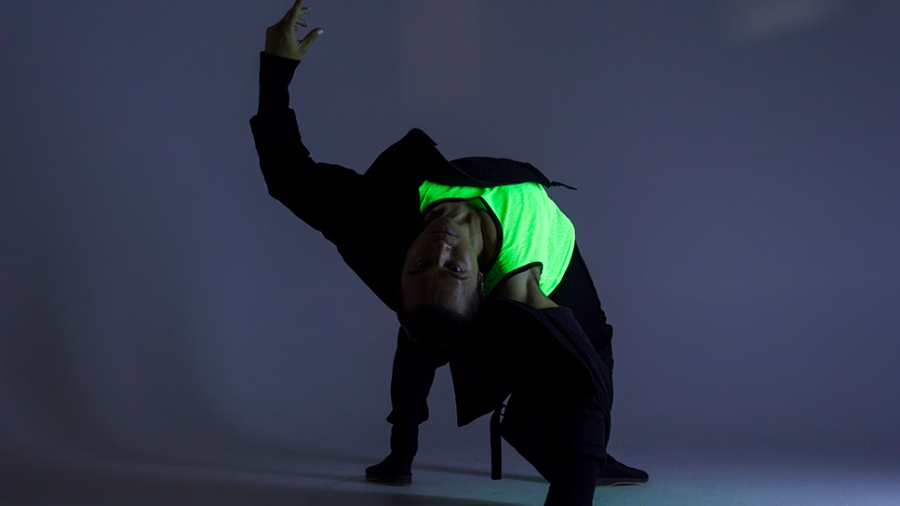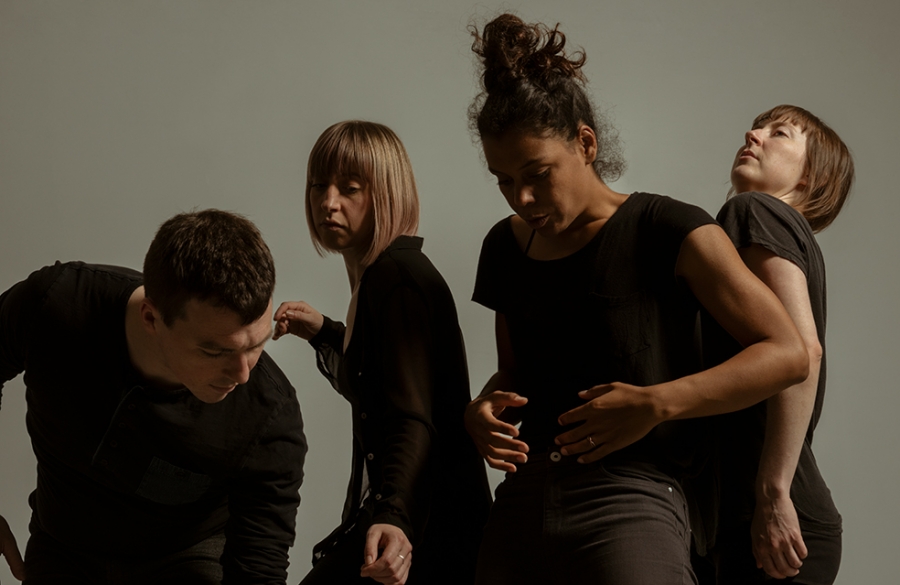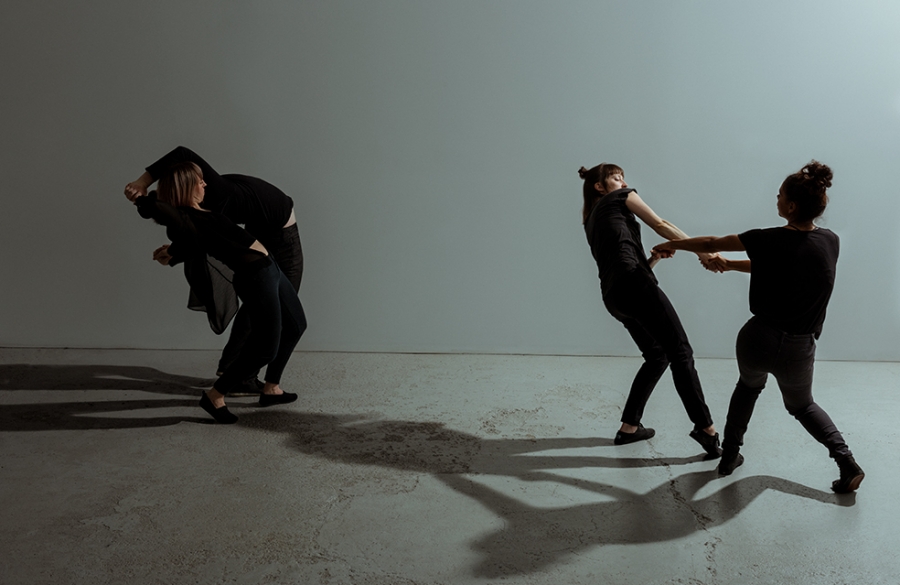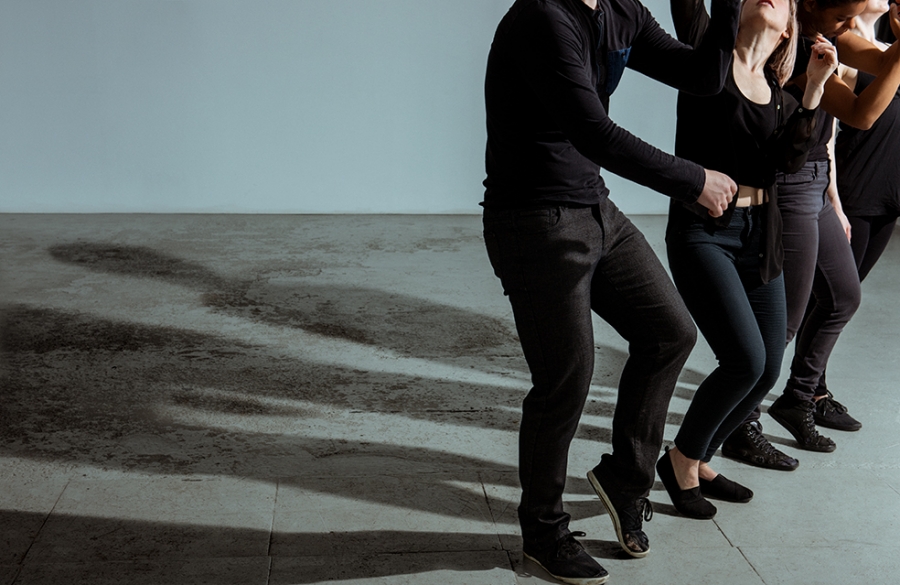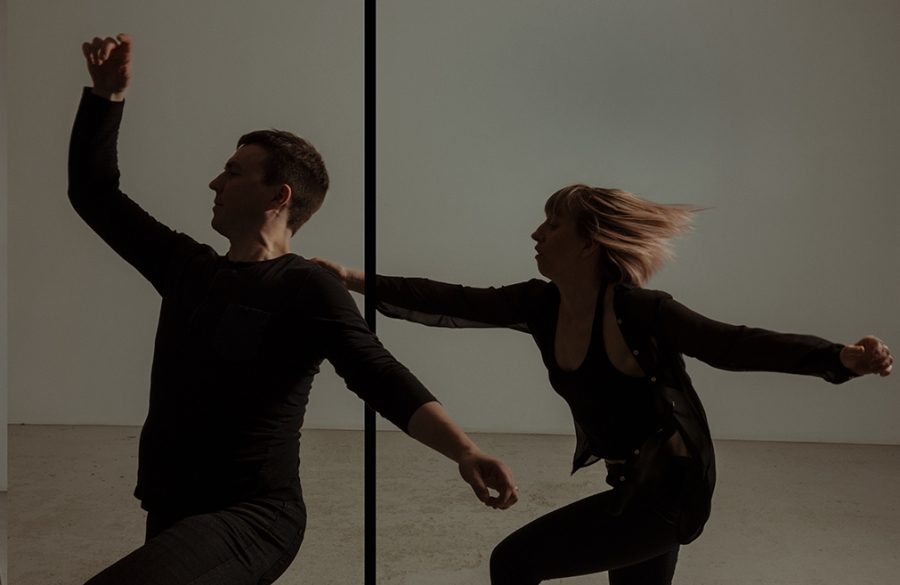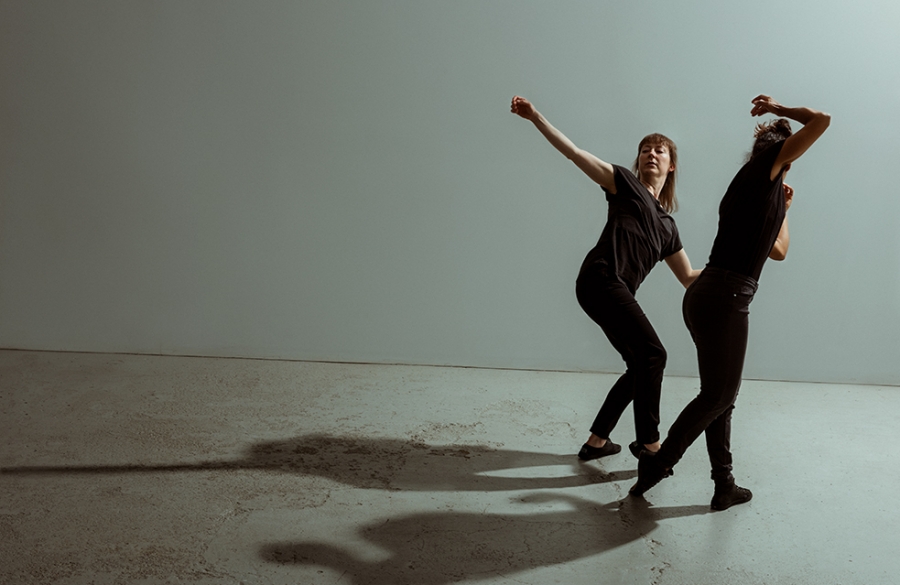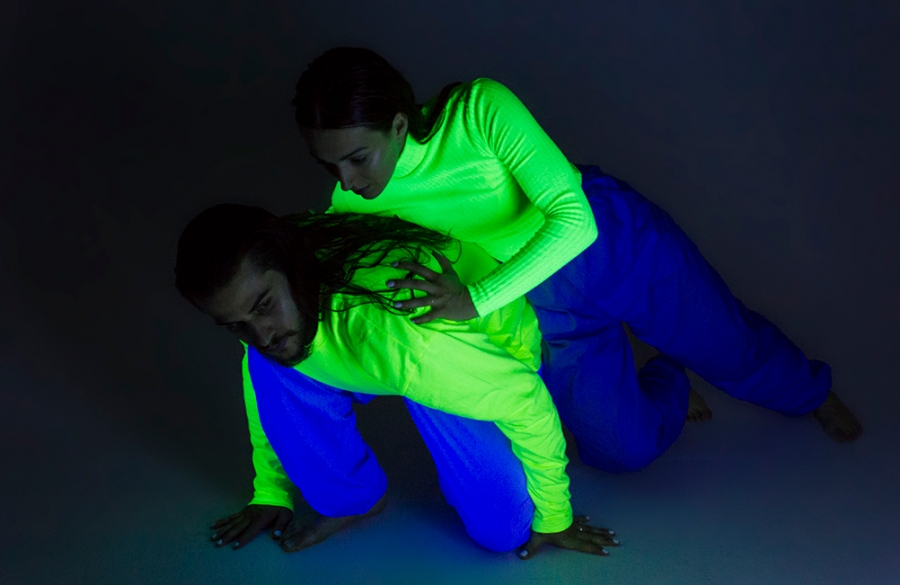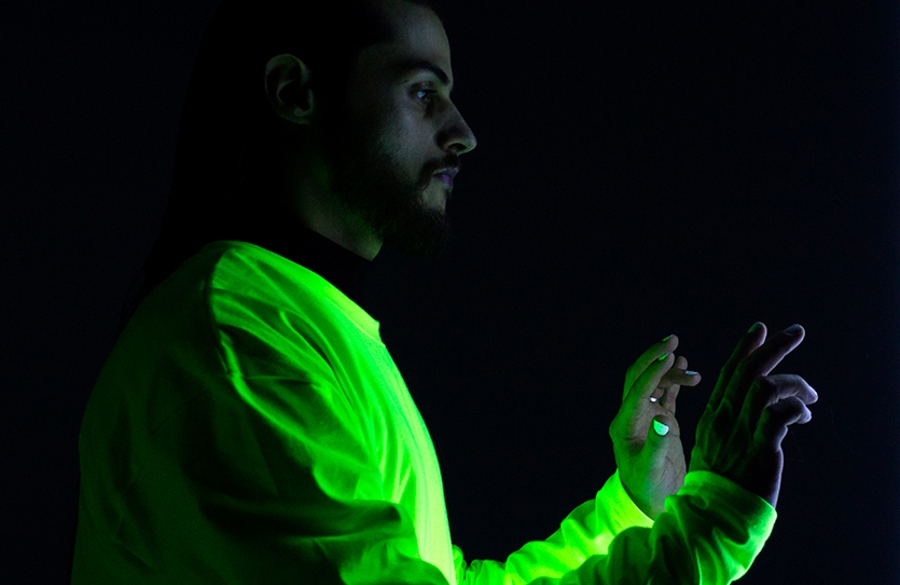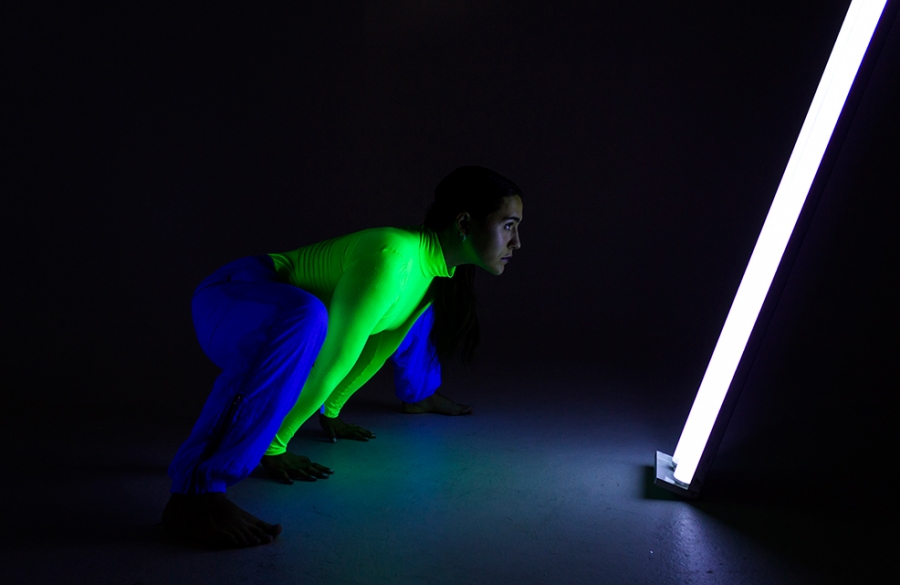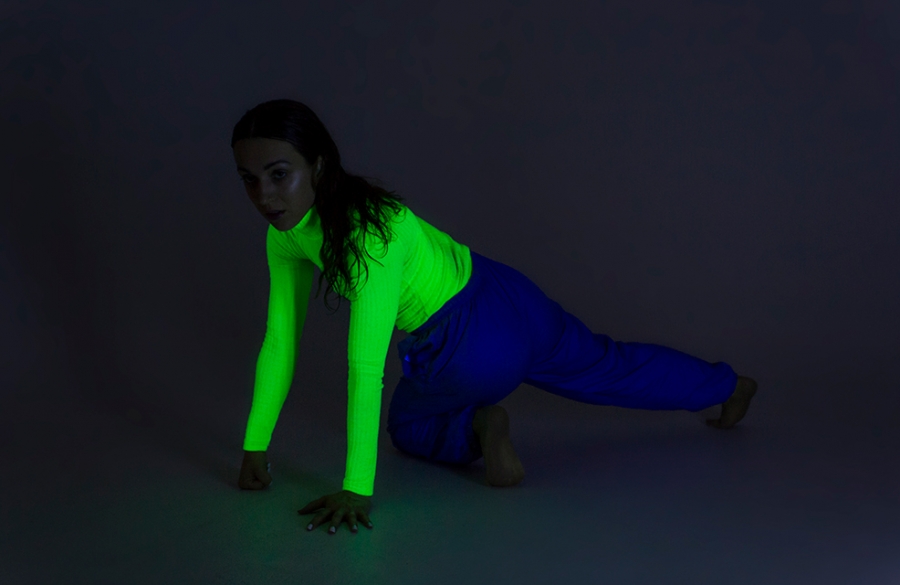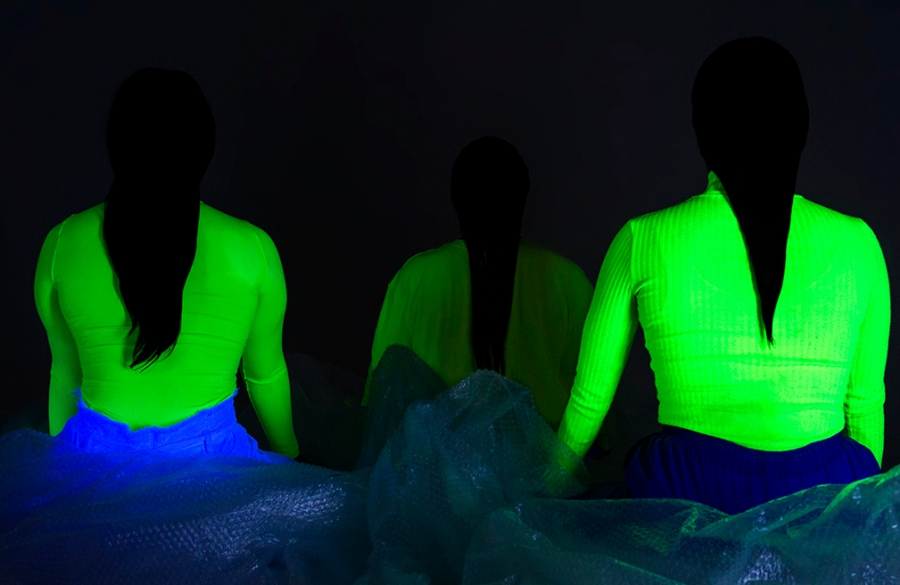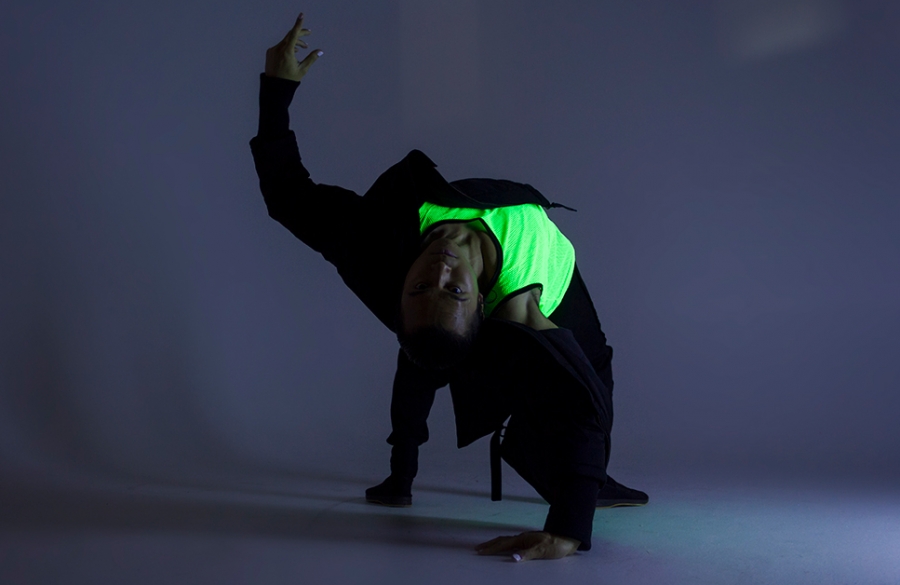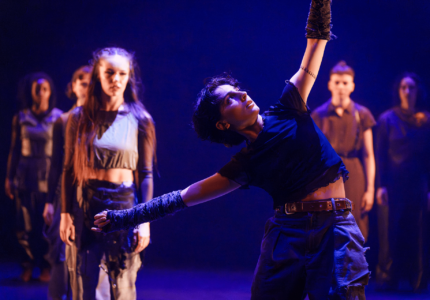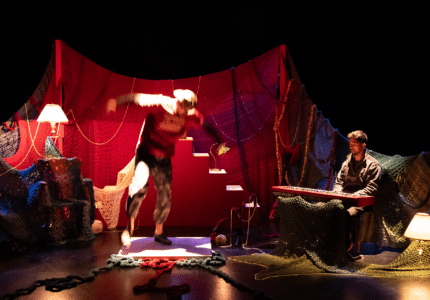Double bill
Philippe Meunier & Ian Yaworski + Stacey Désilier
FEBRUARY 6. 7. 8, 2020 - 7:30PM
FEBRUARY 9, 2020 - 4PM
-
PART OF OUR DISCOVERY PACKAGE
DISCUSSION WITH THE ARTISTS ON FEB. 7
Philippe Meunier & Ian Yaworski
Suspendu au sol
Time to take off our slippers! Two choreographers work with new collaborators. Four contemporary dancers give gigue a try, producing sounds by leaving aside traditional canons. The eyes will see contemporary dance; the ears will recognize gigue. The artists wish to suspend time by studying the relationship between different bodies. These worlds that brush up against one another in the exploration of folklore – without ever giving into the virtuosity of the gigueur – leave no place for censorship.
Production Les Archipels
Choreography Philippe Meunier, Ian Yaworski
Performance David Campbell, Catherine Lafleur, Geneviève Lauzon, Liane Thériault
Rehearsal direction Corinne Crane
Music Cédric Dind-Lavoie
Dramaturgy Benjamin Prescott La Rue
Costume design Cloé Alain-Gendreau
Lighting design Ian Yaworski
Ian Yaworski’s love of dance begins with the Mackinaw folk dance group in Drummondville. His versatility allows him to collaborate with many different choreographers, including Margie Gillis, Menka Nagrani, Lük Fleury, the Bourask dance company, and Benjamin Hatcher. He also collaborates with Théâtre L’Instant as a choreographer. His choreographic work has been presented by Tangente as part of the Biennales de gigue contemporaine, by Zone Homa, and by Place des Arts. In 2016, he collaborates with Philippe Meunier on the duet Accolades et quiproquos (a bromance dance), which becomes the first draft of Monte-Charles, a show presented by Tangente and BIGICO in 2017. The in situ version of this show, Frictions, is part of Jouer Dehors (La danse sur les routes du Québec) and Conseil des arts de Montréal en tournée. In 2019, he founds a company with Philippe Meunier: Les Archipels.
Philippe Meunier has been exploring the world of dance and Québec gigue for over 20 years, collaborating as a performer with many choreographers and dance companies, including Benjamin Hatcher, Les Sortilèges, Zogma, and Bourask. As a choreographer, he has presented his vision of a contemporary Québec gigue at numerous events since 2007, notably at the Biennales de gigue contemporaine (BIGICO) and Tangente. Since 2016 he has collaborated with Ian Yaworski on different shows, including Monte-Charles (Tangente), Frictions (Jouer Dehors – La DSR, CAM en tournée) and Accolades & quiproquos (BIGICO). In 2019, the two choreographers found a company together: Les Archipels. In conjunction with his passion for dance, he works as a videographer, proposing a new and creative look on movement through his videos for different artists.
Liane Thériault is a dance performer, choreographer, rehearsal director, and video artist. As a performer, she has danced for Les Soeurs Schmutt, Anne-Flore de Rochambeau, Julie Lebel, Delphine Véronneau (Tuque et capuche [TeC]), Liliane Moussa, and Claudia Chan Tak, among others. Since 2015, her choreographic work has been presented in Montréal; first, the solo (Personne(une), Somebody), then the creative duet Mine de rien: un collectif. Since 2013, she is part of Dans son salon; first as a video artist and then as a rehearsal director. As a video artist, she has worked with La 2e porte à gauche, Helen Simard, and Karenne Gravel.
Catherine Lafleur is an independent performer and choreographer. She graduated from UQAM in 2005. Since 2009, she has presented her work at Studio 303, the MainLine Theatre, Usine C, as well as several indoor and outdoor venues as part of the Festival Quartiers Danses. Sponsored by Mandoline Hybride, her work was recently presented through the Accès Culture network. Recently, she performed for 14 lieux and started working for Les Archipels.
David Campbell is a professional dancer based in Montréal. Over the years, he has worked with many choreographers, including Ginette Laurin (O Vertigo), Hélène Blackburn (Cas Public), Roger Sinha (Sinha Danse), Hélène Langevin (Bouge de là), Claude Caron (Ballet Ouest de Montréal), and Marie-Claude Poulin (Kondition Pluriel). David also enjoys sharing his love of dance by teaching classes and workshops for students of all ages. David completed professional training programs at the Royal Winnipeg Ballet School and École de danse contemporaine de Montréal.
A graduate of the UQAM dance program, Geneviève Lauzon performs across Canada and internationally for young audiences with the company Sursaut since 2013. She also works on different projects with up-and-coming choreographers such as Joannie Douville, Ghislaine Doté, and Lynsey Billing. As a performer, Geneviève has collaborated with choreographer Philippe Dandonneau on projects presented at Vue sur la relève (Crématorium, 2013), Tangente (Bleach, Danses Buissonnières 2015), Quartiers Danses (Défonce la porte; elle reviendra dans ta face, 2015), and Phenomena (Killing me softly, 2017).
A graduate of École de danse contemporaine de Montréal (EDCM), Corinne Crane performs for a variety of companies, including Maribé — sors de ce corps and Bouge de là, for choreographers Andrée-Anne Ratthé and Sarah-Ève Grant, as well as for the in situ collectives Atypique le collectif and Ballet de ruelles. Since 2011, she also teaches at EDCM and, more recently, for Les Classes à deux. Since 2013, she has been acting as rehearsal director for numerous artists. Presently, she is working on her solo Homeward (presented in 2018 at ZH Festival), an autobiographical cabaret. Corinne has an interest in sharing contemporary dance with different audiences and in facilitating meetings between artists from various disciplines.
Cédric Dind-Lavoie is a double-bass and bass player who is very active in Montréal. For over 15 years, he has collaborated with artists from all types of backgrounds: Misc, Bon Débarras, Alejandra Ribera, Yves Lambert, Jorane, etc. Often requested as a studio musician, he has recorded for over 30 albums in Québec. He has also carved out a place for himself in the jazz community since obtaining a bachelor’s degree in jazz double bass from Université de Montréal in 2009. Cédric splits his time between the stage, the studio, the creation of albums and of soundscapes for multidisciplinary projects.
Suspendu au sol is a new step for the choreographers, who are looking to break out of their routine by working with an artistic team who have no training in Québec gigue. Equipped with a vast experience in contemporary dance, the four performers are immersed in the subtleties of Québec gigue movements, emphasizing the aesthetic without neglecting the sounds of the percussive steps.
This project develops a movement and rhythmic vocabulary based on the deconstruction of traditional Québec gigue and the exploration of folklore with a contemporary twist.
Suspendu au sol is a progressive choreography characterized by self-mockery, fun, and exaggeration.
Stacey Désilier
Pythagore mon corps
A dark stage, fluorescent costumes. How to triangulate the sense of timing between individuality, musicality, and gravity? Many traditions intermingle, providing the performers with different types of body language. Martial arts, urban dances, boxing – everything is a pretext to resist falling and to delay hitting the ground. The choreography is formed through variations in breadth of movement, in sequence length, and in the number of repetitions. As solos alternate with interactions, the spectator witnesses the eternal balancing of human rationality and animality.
Choreography Stacey Désilier
Performance Noémie Dufour-Campeau, Roxanne Dupuis, Charles Brecard, Maïka Giasson, Justine Chevalier-Martineau, Alexandre Wilhelm
Lighting design Benoit Larivière
Sound mix and arrangement Joël Lavoie
Rehearsal direction Marie-Pier Proulx
At the age of seventeen, Stacey Désilier dances at Tangente in I was born on a pirate ship. She then joins the professional training program at École de danse contemporaine, where she collaborates with choreographers and performers Marie-Claire Forté, Sasha Kleinplatz, Victoria Mackenzie, and Dana Gingras. In 2015, she works with Isabelle Boulanger’s company La Grande Fente. She then goes to Dubai with Cirque Éloize before joining The 7 Fingers’ remount of the opera The Circus Princess. In 2016, she is chosen to play the role of a black star in Luc Plamondon’s Starmania, presented by Opéra de Québec. She also joins the Tentacle Tribe company, which brings her back to her urban dance roots. She goes to Haiti to encounter her culture through dance. She works with Helene Simard for Idiot, presented at Théâtre La Chapelle in 2017 and at the Centaur Theatre in 2018. She is part of Simard’s Requiem Pop, presented at Agora de la danse in 2019. She also performs in George Stamos’s Recurrent Measures, which is presented in Croatia, in New York at the Baryshnikov Arts Center, in Nottingham in collaboration with Dance4, and at Agora de la Danse in 2018. Stacey joins the Animals of Distinction company in 2018 for their creation FRONTERA.
Born in France, Alexandre Wilhelm makes his dance debut with DeadAngleCrew. They perform at the Montréal International Jazz Festival, at the FrancoFolies, as well as on the TV show Révolution. After his DEC in dance at Collège Montmorency, Alexandre performs on Nico Archambault’s show Ils dansent. He works with internationally renowned choreographers who diversify the young artist’s movement vocabulary. He is known for his ability to improvise, his artistic sensibility, and his range of movement. Alexandre continues his journey through several creations, including Stacey Désilier’s Pythagore mon corps and Emmanuelle Lê Phan’s Fil rouge.
Originally from the small island of New Caledonia, Charles Brecard wishes to expand his artistic vocabulary. When he arrives in Québec, he studies massage therapy while training at École de danse contemporaine de Montréal. He collaborates with Fate Crusaders, Parts + Labor_Danse, and Andrea Peña. He continuously learns from international teachers. In 2017, he receives a scholarship. He presents his first solo (NO) SURRENDER at Solo Tanz Theater Stuttgart 2018 in Germany. He begins the creation of his new piece HOMELAND with the help of mentor Mélanie Demers and of the quartet RESISTANCE during a residency in Moncton.
Justine Chevalier-Martineau trains at École de danse contemporaine de Montréal. She works with inspiring choreographers such as David Albert-Toth and Emily Gualtieri, Darryl Tracy, Sam Coren, and Alan Lake. Anne Le Beau and Jamie Wright push her to question the full range of abilities a performer can have. In an effort to evolve, Justine remains in tune with her sensations. For her, dance is a way of expressing herself that has no barriers and goes beyond the imagination. She wants to make art in order to make the public experience whatever it is.
Born in Vancouver, Maïka Giasson enters École de danse contemporaine de Montréal, where she deepens her knowledge of the human body and develops her artistic sensibility. She works with choreographers David Albert-Toth and Emily Guiteari (Parts + Labor_danse) and Jacques Denis-Poulin (Grand Poney). Maïka is also passionate about improvisation and video-dance production. Following her training, Maïka undertakes refresher courses at P.A.R.T.S (Brussels) with Jos Baker. She is part of the 2018-2019 edition of the project Fly with Parts + Labor_danse and of Stacey Désilier’s Pythagore mon corps, presented at Festival Quartiers Danses 2018.
Noémie Dufour-Campeau graduates from École de danse contemporaine de Montréal in 2011. Upon graduating, she is cast in the music video for Arcade Fire’s “Sprawl II”, choreographed by Dana Gingras. Noémie also collaborates with La Grande Fente, Audrey Rochette, Léa Tremblay Fong, and Alexandre Morin. Since 2017, Noémie performs with Frédérick Gravel (GravelArtGroup).
Born in New Brunswick, Roxanne Dupuis graduates from École de danse contemporaine de Montréal. She dances in Taipei, Copenhagen, Adelaide, and Montpellier. She is part of Tim Casson’s Postcard Project, a Canada/England co-production. She can also be seen in Breathe Through the Nose with DansEncorps and Elles by Andrea Peña. Roxanne has the chance to perform in Australia for Jackie Taffanel’s play Let’s go. She works as a cultural mediator for Festival Quartiers Danses, where she teaches young offenders, incarcerated teenagers, women in difficulties and people with reduced mobility.
Benoit Larivière has created lighting designs for many theatrical and musical productions but specializes in dance. Some of his main achievements include multiple contracts with Tentacle Tribe, 100Lux, Helen Simard, Ebnfloh, Ford, Monstapop, Claudia Chan Tak, and Nasim Lootij, as well as with theatre companies Multisens, Les Exclamateurs, and Les Écorchés vifs. He approaches lighting in a collaborative spirit with the choreographer/director, drawing his inspiration from their creative universe, always placing great importance on their creative vision. Darkness is central to his work as he searches for ways to create images that are independent of the space where the creation takes place or that modify it.
Joël Lavoie is a composer and sound artist based in Montréal. Besides composition and sound design for theatre and dance, he purses a career in sound engineering. Sensitive to his environment, his music combines the soundscapes that surrounds him with the unreasonableness of electronic and instrumental parasites. He grabs the organicity and spontaneous nature of natural sounds and matches them with the discordant and sometimes cold nature of artificial electronic sounds. Joël has composed and performed for various projects in dance, video, theatre, and poetry. He has had the opportunity to perform in Canada, Lithuania, Sweden, France, the UK, and Mexico.
I search through the martial arts, popping, floor work, and partnering, a language that makes it possible to feel the strength in muscular contractions and the letting go that allows access to various speeds of movements. The animal that is the human being in its appearance, its sexuality, and in its essence is highlighted in solos to demonstrate the individuality and the impulses of each performer. Music is an important element and the performers must be alert to its slightest variations. The music surrounds them in a heavy and organic universe, in particular due to the presence of the Japanese percussive instrument Taiko, of low frequencies, or even of percussive sounds that lend bodies another nature. It is important to me that we do not distinguish gender, but rather that we see the animal in humans.

